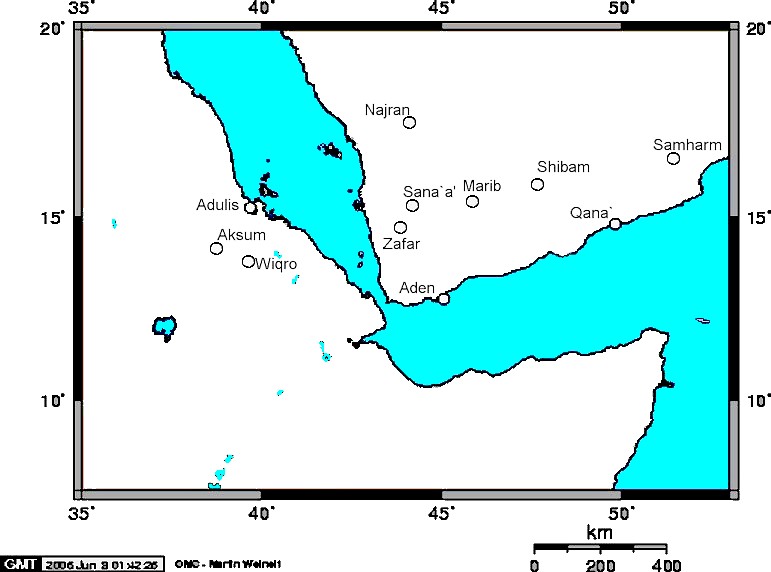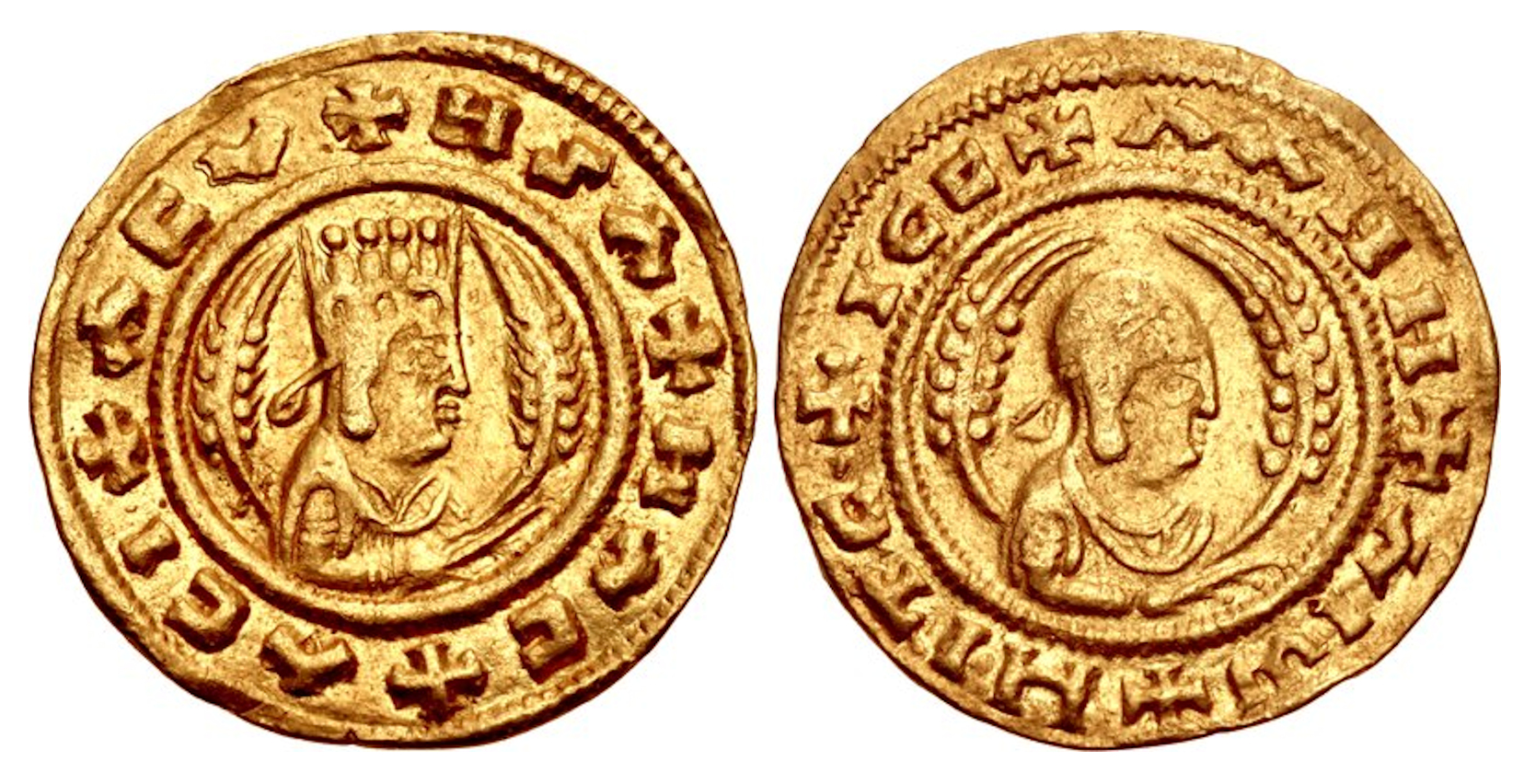|
Alla Amidas
Alla Amidas (c. 540) was a King of the Kingdom of Aksum. He is primarily known from the coins minted during his reign. Due to die-links between the coins of Alla Amidas and Kaleb, Munro-Hay suggests that the two kings were co-rulers. Alla Amidas possibly ruled the Aksumite territories on the western side of the Red Sea, while Kaleb was campaigning in the east in Southern Arabia South Arabia () is a historical region that consists of the southern region of the Arabian Peninsula in Western Asia, mainly centered in what is now the Republic of Yemen, yet it has also historically included Najran, Jizan, Al-Bahah, and 'A ....S. C. Munro-Hay, ''Aksum: An African Civilization of Late Antiquity'' (Edinburgh: University Press, 1991), pp. 156f. Some Ethiopian chroniclers claimed that it was during the reign of Alla Amidas that the Nine Saints came to Ethiopia. Notes Kings of Axum 6th-century monarchs in Africa Year of birth uncertain Year of death missing {{ ... [...More Info...] [...Related Items...] OR: [Wikipedia] [Google] [Baidu] |
List Of Kings Of Axum
The kings of Axum ruled an important trading state in the area which is now Eritrea and northern Ethiopia, from approximately 100–940 AD.S.C. Munro-Hay, ''Aksum'' (Edinburgh: University Press, 1991), pp. 67f Zenith of the Kingdom of Axum Later kings Notes See also * Axum * Lists of office-holders * List of emperors of Ethiopia This article lists the emperors of Ethiopia, from the founding of the Zagwe dynasty in the 9th/10th century until 1974, when the last emperor from the Solomonic dynasty was deposed. Kings of Aksum and Dʿmt are listed separately due to numerou ... References {{DEFAULTSORT:Kings Of Axum Axum Axum Axum Eritrea history-related lists ... [...More Info...] [...Related Items...] OR: [Wikipedia] [Google] [Baidu] |
Kaleb Of Axum
Kaleb (), also known as Saint Elesbaan, was King of Aksum, which was situated in modern-day Eritrea and Ethiopia. Procopius calls him "Hellestheaeus", a variant of grc-koi, Ελεσβόάς version of his regnal name, gez, እለ አጽብሐ, translit=ʾƎllä ʾAṣbəḥa (''Histories'', 1.20). Variants of his name are Hellesthaeus, Ellestheaeus, Eleshaah, Ellesboas, Elesbaan, and Elesboam. At Aksum, in inscription RIE 191, his name is rendered in unvocalized Gə‘əz as KLB ’L ’ṢBḤ WLD TZN (Kaleb ʾElla ʾAṣbeḥa, son of Tazena). In vocalized Gə‘əz, it is (Kaleb ʾƎllä ʾAṣbəḥa). Kaleb, a name derived from the Biblical character Caleb, was his given name; on both his coins and inscriptions he left at Axum, as well as Ethiopian hagiographical sources and king lists, he refers to himself as the son of Tazena. History Procopius, John of Ephesus, and other contemporary historians recount Kaleb's invasion of Yemen around 520, against the Himyarit ... [...More Info...] [...Related Items...] OR: [Wikipedia] [Google] [Baidu] |
Wazena
Wazena (mid-6th century) was a King of the Kingdom of Aksum. He is primarily known through the Aksumite currency that was minted during his reign. Without any clear discussion, Munro-Hay identifies him with a king Alla Amidas Alla Amidas (c. 540) was a King of the Kingdom of Aksum. He is primarily known from the coins minted during his reign. Due to die-links between the coins of Alla Amidas and Kaleb, Munro-Hay suggests that the two kings were co-rulers. Alla Amidas ..., who is also known only through the coins he issued.Munro-Hay ''Aksum: An African Civilization of Late Antiquity'' (Edinburgh: University Press, 1991), p. 84. Notes External links Page showing a coin minted under Wazena Kings of Axum 6th-century monarchs in Africa {{Ethiopia-royal-stub ... [...More Info...] [...Related Items...] OR: [Wikipedia] [Google] [Baidu] |
Kingdom Of Aksum
The Kingdom of Aksum ( gez, መንግሥተ አክሱም, ), also known as the Kingdom of Axum or the Aksumite Empire, was a kingdom centered in Northeast Africa and South Arabia from Classical antiquity to the Middle Ages. Based primarily in what is now northern Ethiopia, and spanning modern-day Eritrea, northern Djibouti, and eastern Sudan, it extended at its height into much of modern-day southern Arabia during the reign of King Kaleb. Axum served as the kingdom's capital for many centuries but relocated to Jarma in the 9th century due to declining trade connections and recurring external invasions. Emerging from the earlier Dʿmt civilization, the kingdom was likely founded in the early 1st century. Pre-Aksumite culture developed in part due to a South Arabian influence, evident in the use of the Ancient South Arabian script and the practice of Ancient Semitic religion. However, the Geʽez script came into use by the 4th century, and as the kingdom became a major power on ... [...More Info...] [...Related Items...] OR: [Wikipedia] [Google] [Baidu] |
Aksumite Currency
Aksumite currency was coinage produced and used within the Kingdom of Aksum (or Axum) centered in present-day Eritrea and Ethiopia. Its mintages were issued and circulated from the reign of King Endubis around AD 270 until it began its decline in the first half of the 7th century. During the succeeding medieval period, Mogadishu currency, minted by the Sultanate of Mogadishu, was the most widely circulated currency in the Horn of Africa. Aksum's currency served as a vessel of propaganda demonstrating the kingdom's wealth and promoting the national religion (first polytheistic and later Oriental Christianity). It also facilitated the Red Sea trade on which it thrived.Stuart Munro-Hay, ''Aksum: An African Civilization of Late Antiquity''. Edinburgh: University Press, 1991, p. 155. The coinage has also proved invaluable in providing a reliable chronology of Aksumite kings due to the lack of extensive archaeological work in the area.Hahn, Wolfgang, "Coinage" in Uhlig, Siegbert, ed., ' ... [...More Info...] [...Related Items...] OR: [Wikipedia] [Google] [Baidu] |
Red Sea
The Red Sea ( ar, البحر الأحمر - بحر القلزم, translit=Modern: al-Baḥr al-ʾAḥmar, Medieval: Baḥr al-Qulzum; or ; Coptic: ⲫⲓⲟⲙ ⲛ̀ϩⲁϩ ''Phiom Enhah'' or ⲫⲓⲟⲙ ⲛ̀ϣⲁⲣⲓ ''Phiom ǹšari''; Tigrinya: ቀይሕ ባሕሪ ''Qeyih Bahri''; ) is a seawater inlet of the Indian Ocean, lying between Africa and Asia. Its connection to the ocean is in the south, through the Bab el Mandeb strait and the Gulf of Aden. To its north lie the Sinai Peninsula, the Gulf of Aqaba, and the Gulf of Suez (leading to the Suez Canal). It is underlain by the Red Sea Rift, which is part of the Great Rift Valley. The Red Sea has a surface area of roughly 438,000 km2 (169,100 mi2), is about 2250 km (1398 mi) long, and — at its widest point — 355 km (220.6 mi) wide. It has an average depth of 490 m (1,608 ft), and in the central ''Suakin Trough'' it reaches its maximum depth of . The Red Sea also has exten ... [...More Info...] [...Related Items...] OR: [Wikipedia] [Google] [Baidu] |
Southern Arabia
South Arabia () is a historical region that consists of the southern region of the Arabian Peninsula in Western Asia, mainly centered in what is now the Republic of Yemen, yet it has also historically included Najran, Jizan, Al-Bahah, and 'Asir, which are presently in Saudi Arabia, and the Dhofar of present-day Oman. South Arabia is inhabited by people possessing distinctive linguistic and ethnic affinities, as well as traditions and culture, transcending recent political boundaries. There are two indigenous language groups: the now extinct Old South Arabian languages and the unrelated Modern South Arabian languages, both members of the Semitic family. Etymology The term ''Yamnat'' was mentioned in Old South Arabian inscriptions on the title of one of the kings of the second Himyarite Kingdom known as Shammar Yahrʽish II. The term was probably referring to the southwestern coastline of the Arabian peninsula and the southern coastline between Aden and Hadramout. One etymolog ... [...More Info...] [...Related Items...] OR: [Wikipedia] [Google] [Baidu] |
Nine Saints
The Nine Saints were a group of missionaries who were important in the initial growth of Christianity in what is now Ethiopia during the late 5th century. Their names were Abba Aftse, Abba Alef, Abba Aragawi, Abba Garima (Isaac, or Yeshaq), Abba Guba, Abba Liqanos, Abba Pantelewon, Abba Tsahma, and Abba Yem’ata. Although frequently described as coming from Syria, only two or three actually came from that province; according to Paul B. Henze, others have been traced to Constantinople, Anatolia, and even Rome. __NOTOC__ The Ethiopian historian Taddesse Tamrat speculates that they may have been connected with the anti-Monophysite and anti-Miaphysite persecutions that followed the Council of Chalcedon, which adopted Dyophysitism. Their activities spread Christianity beyond "a narrow corridor between Adulis and Aksum along the caravan routes." Besides converting the local inhabitants to Christianity, they also founded a number of monastic houses that followed the rule of Saint Pacho ... [...More Info...] [...Related Items...] OR: [Wikipedia] [Google] [Baidu] |
Kings Of Axum
The kings of Axum ruled an important trading state in the area which is now Eritrea and northern Ethiopia, from approximately 100–940 AD.S.C. Munro-Hay, ''Aksum'' (Edinburgh: University Press, 1991), pp. 67f Zenith of the Kingdom of Axum Later kings Notes See also * Axum * Lists of office-holders * List of emperors of Ethiopia This article lists the emperors of Ethiopia, from the founding of the Zagwe dynasty in the 9th/10th century until 1974, when the last emperor from the Solomonic dynasty was deposed. Kings of Aksum and Dʿmt are listed separately due to numerou ... References {{DEFAULTSORT:Kings Of Axum Axum Axum Axum Eritrea history-related lists ... [...More Info...] [...Related Items...] OR: [Wikipedia] [Google] [Baidu] |
6th-century Monarchs In Africa
The 6th century is the period from 501 through 600 in line with the Julian calendar. In the West, the century marks the end of Classical Antiquity and the beginning of the Middle Ages. The collapse of the Western Roman Empire late in the previous century left Europe fractured into many small Germanic kingdoms competing fiercely for land and wealth. From the upheaval the Franks rose to prominence and carved out a sizeable domain covering much of modern France and Germany. Meanwhile, the surviving Eastern Roman Empire began to expand under Emperor Justinian, who recaptured North Africa from the Vandals and attempted fully to recover Italy as well, in the hope of reinstating Roman control over the lands once ruled by the Western Roman Empire. In its second Golden Age, the Sassanid Empire reached the peak of its power under Khosrau I in the 6th century.Roberts, J: "History of the World.". Penguin, 1994. The classical Gupta Empire of Northern India, largely overrun by the Huna, ended in ... [...More Info...] [...Related Items...] OR: [Wikipedia] [Google] [Baidu] |
Year Of Birth Uncertain
A year or annus is the orbital period of a planetary body, for example, the Earth, moving in Earth's orbit, its orbit around the Sun. Due to the Earth's axial tilt, the course of a year sees the passing of the seasons, marked by change in weather, the hours of daylight, and, consequently, vegetation and soil fertility. In temperate and subpolar climate, subpolar regions around the planet, four seasons are generally recognized: spring (season), spring, summer, autumn and winter. In tropics, tropical and subtropics, subtropical regions, several geographical sectors do not present defined seasons; but in the tropics#Seasons and climate, seasonal tropics, the annual wet season, wet and dry seasons are recognized and tracked. A calendar year is an approximation of the number of days of the Earth's orbital period, as counted in a given calendar. The Gregorian calendar, or modern calendar, presents its calendar year to be either a common year of 365 days or a leap year of 366 days, a ... [...More Info...] [...Related Items...] OR: [Wikipedia] [Google] [Baidu] |

.jpg)




